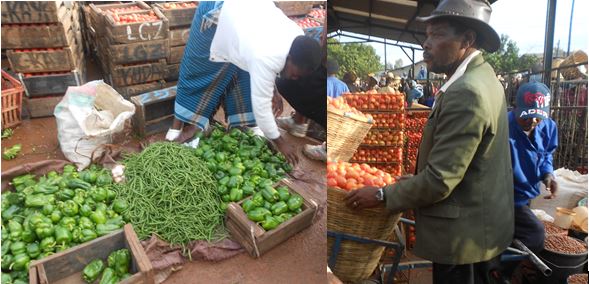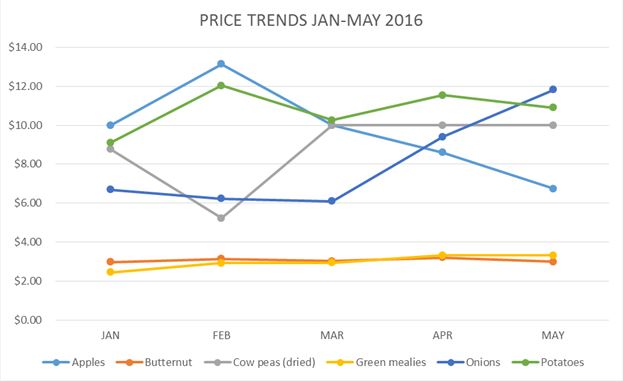The way public and private institutions have been set up in most developing countries does not create space for adequately absorbing feedback from many people. Bureaucratic structures such as government ministries continue to privilege certain sources of information and knowledge at the exclusion of what is coming from outside. However, in the prevailing digital era, this arrangement is preventing these institutions from shaping and staying ahead of socio-economic trends. The situation is worse in agriculture-driven African economies. In the absence of digital and other capabilities, formal institutions are struggling to interpret and make sense of important data from markets and other sources.
The explosion of digital technology is leading to consistent sprouting of unexpected pockets of knowledge and expertise which used to lie dormant in African communities. For instance, a lot of information is being generated by farmers, vendors, consumers, transporters, processors and many other actors. However, there is less capacity to convert these sources of insight into solutions.

Work by eMKambo is beginning to show that data from interactions in agricultural markets are fundamental grist for analytics that can guide the development and design of appropriate agricultural interventions. This can reduce complexity and ultimately boost value in agricultural economies. Unfortunately, there does not seem to be high levels of preparedness in taking advantage of data among actors like financial institutions and manufacturing companies. These institutions have to urgently forge smart partnerships if they are to access the best talent and gain new capabilities.
Examples of trends from people’s agriculture markets
Embracing the big data revolution can see easily African agricultural policy makers obtaining trends from informal markets whose activities were previously unrecorded and unknown.
January to May 2016 price trends for particular commodities in Mbare Market of Harare, Zimbabwe

Apples
The average price of apples was $10.00 per 20-kilogramme box. Apple supply was high in January but supply decreased in the following month leading to an increase in price to around $13.00. Supply increased around May, leading to a downward trend in prices.
Butternut
There was no significant change in the price of butternut ($2.50 to just above $3.00) for a 10-kilogramme pocket. Usually, the price increases during major events such as holiday weeks which also drive consumption.
Cow peas
Besides ordinary consumers, some farmers also drive price trends in cow peas. Many farmers buy cow pea seed for planting. The price is seen to decrease in February as new harvests start tricking in. From March to May, prices are almost constant since the commodity will be flowing into the market in constant supplies.
Green Mealies
The price of green mealies did not fluctuate much from January to May 2016. The supply of green mealies tends to increase during this period as there will be new harvest from the farming season, complemented with the irrigated crop.
Onion
Onion price has been on an increasing trend due to low supply. Since onion produced in Zimbabwe does not have a long shelf life, farmers are always in a hurry to get rid of the product once harvested. This often happens towards the rainy season which often causes the commodity to sprout especially when exposed to excessive moisture. The bulk of onions sold in the market from around January to June are imported from South Africa. As a result, the price is higher than that produced locally.
Potatoes
During the month of January, the price of potatoes was relatively low due to more supplies against demand. However, the increased in February as supply decreased. Most farmers do not grow potatoes during the rainy season and that affects supply in the following months. The price increased towards the end of the rainy season since many farmers had started producing.
Birth of a new career
Against the background of lack capacity to handle masses information being generated through mobile technology, knowledge mobilisation is becoming a legitimate career choice. Knowledge mobilisation relates to processes of moving knowledge to where it can be most useful. Knowledge mobilisers are people who move knowledge into action. Unfortunately African schools and universities are not teaching knowledge mobilisation skills like making sense of diverse definitions of knowledge as well as identifying useful models and tools. There should be mechanisms for developing a new generation of knowledge mobilisers – individuals with the skills and practical abilities to move knowledge into action. Since knowledge mobilisation means different things to different people, it remains difficult for institutions to identify and clarify new associated roles.
charles@knowledgetransafrica.com / charles@emkambo.co.zw / info@knowledgetransafrica.com
Website: www.emkambo.co.zw / www.knowledgetransafrica.com
